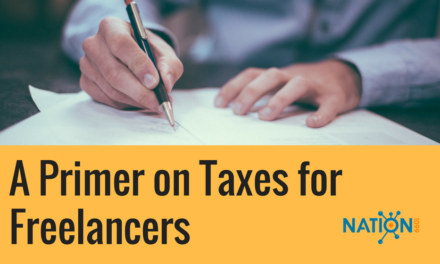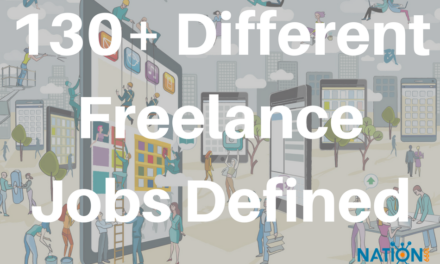Paying self-employment taxes as a freelancer can be a pain and deciding if you need business insurance as an independent consult is a tough call. But all things considered, life could be worse — except, oh shoot, what are we doing about retirement? That’s where the SEP-IRA comes in.
If you are a U.S. resident who has come to consulting or freelancing from a traditional W-2 based job, you are probably used to a retirement plan made up of two parts: the employee contribution (yours) and the employer contribution. This is usually in the form of a 401k plan, or a 403b if you work at a nonprofit, university, school or hospital.
And you are probably used to the contributions to these plans having certain tax advantages.
But when you are self employed, you may be wondering how to reproduce both the employee and the employer contributions. And you may wonder how to make any savings you do set aside tax deferred the way that a 401k is.
In other words, it may seem that by going freelance you have set yourself to not save for retirement as effectively as a W-2 employee does. Though studies show that freelancers strongly prefer the gig economy lifestyle, the biggest downside is concern about retirement. When asked what they mainly dislike about being a freelancer, according a survey by ReportLinker, the top reason — by 27 percent of respondents — is “no retirement benefits.”
However, that isn’t actually true. There is a retirement option for freelancers that is comparable to an employer sponsored plan. SEP-IRAs are the low-hassle retirement savings tool you’ve been searching for! It allows you to reproduce parts of the formula — the employee and employer contributions — and the tax benefits.
If you haven’t considered how a SEP-IRA can supplement a personal IRA, it’s in your best interest to learn a little more about it.
Related reading: Conquer Freelance Taxes and Independent Contractor Tax Deductions
Less upkeep and risk of charges
The SEP in SEP-IRA stands for Simplified Employee Pension. The SEP-IRA is a type of traditional IRA for anyone with freelance income (or any business owner with one or more employees) and, according to CNN Money’s Ultimate Guide to Retirement, “may be your best bet if you are a one-person show and plan to keep it that way.”
Former MSN correspondent Kristin Wong sheds some light on how these useful protections can be more advantageous than the standard IRA in a recent blog for Get Rich Slowly.
With the SEP-IRA, you decide when and how much to contribute.
The gist is this — SEP-IRAs are a responsible choice for consultants and will give you less to worry about.
A SEP-IRA lets you save bigger and smarter
While all retirement savings plans have ceilings for annual contributions, most of them do not give penalty-free flexibility to grow your savings in the way SEP-IRA does.
Don’t confuse the SEP-IRA with the Traditional and Roth IRAs that you may be quite familiar with already. Those are personal retirement plans to supplement your employment-based retirement plans. The SEP-IRA would now become your employment-based plan, and you could still also maintain a personal retirement account in the form of a Traditional or Roth IRA.
Essentially, the SEP-IRA fills in for the 401K and treats you as both the employer and an employee of your business.
Unlike Traditional IRAs and Roth IRAs, which limit yearly contributions to $5,550, SEP-IRAs allow you to contribute up to 20 percent of your net-adjusted self-employment income.
On top of this, like the more mainstream retirement savings plans, SEP-IRAs have both tax deductible and tax deferred versions. You can set them up to resemble either the Traditional IRA (tax deductible) and Roth IRA (tax deferred) models.
These factors all can make a big difference over time. Contributing editor for the Simple Dollar Holly Johnson drafted up a neat case study in a recent post that quickly illustrates the usefulness of a SEP-IRA plan for the independent contractor.
SEP-IRAs are very easy to set up
Lastly, the ease of setup for SEP-IRAs is hard to beat. You can set one up online via numerous providers and without contact with the IRS.
Additionally, they’re open to just about anyone making money with at least a side hustle. Even if you are employed full-time but making income via a freelance consulting practice you can reap these benefits without worrying about any interference with your pre-existing IRA.
And on top of this, SEP-IRAs offer solos a great deal of flexibility in their set up. If you love putting everything off for as long as possible, then you will love the fact that you can open one at any time leading up to your tax filing deadline.

Sound up your alley?
While the advantages of SEP-IRAs are many, a retirement plan is still a serious enough matter that you do not want to open one simply because it’s a quick job. It’s worth learning more about them and weighing your options between an IRA, SEP-IRA, or a combination of the two. But all things considered, end of your employment-based 401K doesn’t mean the end of tax-advantaged retirement savings!
Related reading: Freelance Finances: Manage Your Income Like A Thriving Artist











